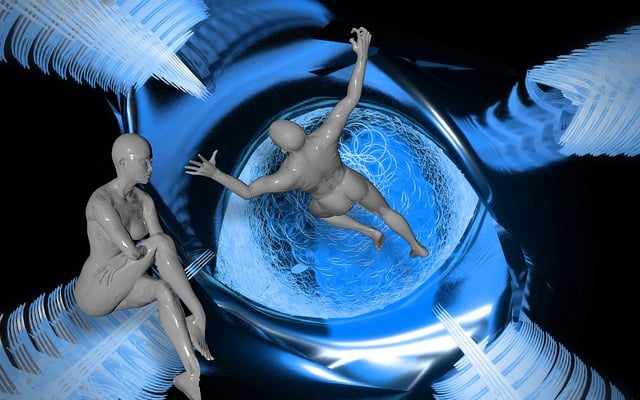Cold therapy, including ice packs, cold water immersions, and cryotherapy, offers a natural and effective remedy for migraine aura and associated headaches. These techniques reduce inflammation, constrict blood vessels, and calm pain signals, providing rapid relief and potentially decreasing the frequency and severity of future migraines. Regular application can also offer long-term benefits in managing chronic migraines, improving quality of life by minimizing headache occurrences and disabilities.
“Discover the power of cold therapy for migraines and explore an effective, natural approach to calming migraine aura symptoms. This comprehensive guide delves into the science behind ice pack for migraine relief and cryotherapy for migraines, revealing how simple techniques like cold water immersion for migraines can provide significant benefits of cold compress for headaches. From understanding migraine aura and its impact to long-term considerations, this article equips you with the knowledge to navigate effective migraine pain relief with cold therapy.”
Understanding Migraine Aura and Its Impact
Migraine aura is a complex neurological condition that precedes or accompanies a migraine headache. It presents as a series of visual, sensory, or speech disturbances, often described as an “aura.” These symptoms can be disturbing and debilitating, significantly impacting an individual’s quality of life. The exact causes of migraine aura are not fully understood, but it’s believed to involve changes in brain activity and blood flow.
During a migraine attack, many people seek immediate relief to alleviate both the headache and associated aura symptoms. Cold therapy has emerged as a promising natural remedy for migraines, offering significant potential benefits such as reducing inflammation, constricting blood vessels, and providing pain relief. Applications like ice packs, cold water immersions, and cryotherapy sessions have shown promise in calming migraine aura and its impact, offering a non-pharmaceutical alternative for those seeking to manage their condition effectively.
The Role of Cold Therapy in Migraine Management
Cold therapy has emerged as a powerful tool in the arsenal against migraine attacks, offering a simple yet effective approach to managing symptoms. When a patient experiences the telltale signs of a migraine aura—visual disturbances, sensitivity to light and sound, and even tingling sensations—applying cold can provide rapid relief and help mitigate the intensity of the episode. This is particularly true for ice packs or cold compresses, which are easily accessible and can be used at the first sign of an impending migraine.
The benefits of cold therapy for migraines are multifaceted. Cold water immersion, a more intense technique, has been shown to reduce inflammation and constrict blood vessels, thereby cooling the brain and calming pain signals. Cryotherapy, another extreme form, involves short bursts of exposure to extremely low temperatures, which can effectively abort a migraine attack. These cooling techniques not only help to alleviate immediate pain but also offer long-term benefits by potentially reducing the frequency and severity of future migraines.
Different Cold Application Techniques for Relief
Cold applications offer a range of effective techniques to alleviate migraine aura symptoms and reduce associated discomfort. One popular method is utilizing an ice pack, which can be easily accessed and applied directly to the head or affected areas. By placing an ice-cold compress on the skin, you initiate vasoconstriction, narrowing blood vessels and reducing inflammation in the process. This simple yet powerful approach can provide fast relief from throbbing pain and visual disturbances common in migraine attacks.
Beyond ice packs, individuals have explored various cooling techniques for headaches. For instance, some opt for cold water immersion by taking a cool bath or shower, which helps to relax muscles and soothe nerve sensitivity. Cryotherapy, involving short-term exposure to extreme cold, has also gained attention as a potential game-changer in migraine management. These innovative approaches harness the benefits of cold therapy for migraines, offering natural and effective ways to manage symptoms, especially when combined with traditional treatments.
Long-term Benefits and Considerations for Cold Therapy for Migraines
While immediate relief is a significant benefit of using cold applications to treat migraine aura symptoms, there are also long-term advantages to consider. Regular use of cooling techniques like ice packs, cold water immersion, or cryotherapy can help reduce the frequency and severity of migraines over time. Studies have shown that cold therapy for migraines can be an effective preventive measure, offering a natural alternative to medications with potential side effects.
For individuals looking to manage their chronic migraine conditions, incorporating cool treatments into their care routines may provide sustainable results. Benefits of a cold compress for headaches include reducing inflammation and constricting blood vessels in the brain, which can disrupt the pain signals responsible for migraines. As such, these cooling techniques are valuable tools for those seeking long-term solutions beyond traditional medication, potentially improving quality of life by minimizing headache occurrences and their associated disabilities.
Calming migraine aura symptoms with cold applications offers a promising natural approach to managing this debilitating condition. By utilizing cold therapy, including ice packs, cryotherapy, and cold water immersion, individuals can experience significant relief from migraine pain and reduce the impact of associated symptoms. Integrating these cooling techniques into their treatment regimen provides long-term benefits, offering a simple yet effective method for folks to take control of their migraine management.
